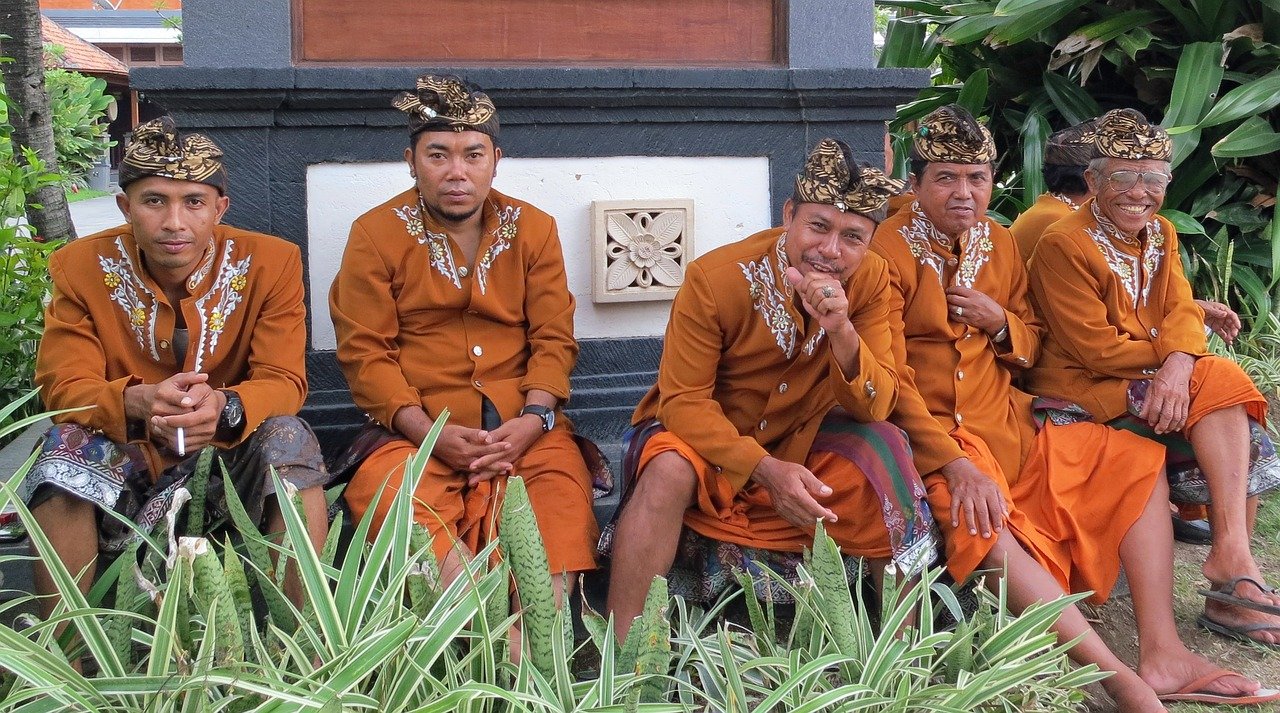The Subak System: Bali's Ingenious Rice Irrigation Network and the Challenges of Drought
Can you see the channel through these Balinese rice fields?
Beautiful landscape, spiritual cooperation
Most visitors to Bali will visit a rice terrace during their stay, such as Tegallalang, near Ubud.
Having an insight into the lifeblood of Bali’s agriculture and the landscape of rice terraces will really bring what you will experience when you visit Bali to life.
Recent drought in Bali
At the same time, visitors to Bali might be surprised to hear that Bali is undergoing a drought and is battling forest fires and severe water shortages in some regions. Water scarcity has been an issue for Bali for some time.
A relatively recent academic paper by Dr Hao Huang, who is the Bessie and Frankel Endowed Chair in Music at Scripps College, caught my eye and provided a fascinating insight into the Subak rice system and the challenges it faces in a modern era.
This is my learning from Dr Huang’s “Nature and the Spirit: Ritual, Environment, and the Subak in Bali”, which takes a sensitive look at the Subak system of cooperative irrigation and how it has withstood misguided attempts to modernize it for greater output and the new challenges it faces in the tourist age.
What is the Subak system?
Farmers in Bali, Indonesia, have cultivated lush green rice terraces for over a thousand years, made possible by a traditional irrigation management system known as Subak.
This intricate network of canals, dams, temples, and social organizations allows rice cultivation to flourish on the volcanic island. Subak combines practical water management with religious rituals rooted in Balinese Hinduism.
The subak system enables farmers to cooperatively share water resources and control pests. At its peak, Subak allowed Bali to become one of Asia's most productive rice growers.
But in recent decades, Subak has come under threat from rapid tourism development, population growth, and agricultural modernization policies.
As traditional ways fade, the future of this sustainable farming legacy remains uncertain. Yet Subak continues to spiritually connect the Balinese people to the rice goddess Dewi Sri and water goddess Dewi Danu. Its practices interweave the mundane with the sacred.
The Divine Gifts of Rice and Water
Rice is an indispensable staple food for the people of Bali. Accordingly, they worship Dewi Sri, the goddess of rice fertility. Intricately woven offerings to Dewi Sri can be seen in shrines across the countryside. Farmers believe the goddess protects the rice terraces and brings abundant harvests.
Equally important is Dewi Danu, revered as the goddess of Lake Batur, the volcanic crater lake that irrigates most of Bali. Canals originating from the high mountain lakes circulate water to temples downstream, eventually supplying the island's intricate patchwork of rice fields. Through her gift of water, Dewi Danu makes agriculture possible on this arid tropical island.
Daily rituals demonstrate the farmers' gratitude towards these goddesses. The Balinese dedicate both flowers and grains to the deities who sustain human existence. For the people, growing rice is not just an agricultural activity but an act of devotion.
The Sacred Flow from Mountains to Sea
In Balinese Hindu cosmography, mountains are sacred high places from where life-giving waters flow. The water temples at Pura Ulun Danu Batur and Pura Ulun Danu Bratan sanctify the main sources of irrigation. From these holy volcanic lakes, canals guide the water in a cascading system downslope, mirroring the topography.
At each stage, local water temples receive the flows and redistribute them to fields and villages below. Through prayers and offerings, the passage of water is ritually consecrated as it travels from upstream to downstream. The Subak system replicates the Hindu principle of ritual purification: as water moves from mountain heights to the sea, it flows from purity to impurity.
High elevations represent the realm of the gods. The lowlands are the domain of humans. The sea embodies chaos and darkness. Subak channels the essential flow of water across these realms while balancing the complimentary forces of mountain and sea.
The Subak Rules of Cooperation
Subak refers to the entire socio-ecological system that governs irrigation management as well as individual farmer associations. The ontological view in Bali is that water belongs to the gods, not humans. But gods bestow the gift of water to faithful farmers. Subak organizations are thus entrusted to oversee the fair distribution of this sacred resource.
Farmers must cooperate to share water equitably, particularly during the dry season when water is scarce. The downstream fields would suffer if upstream farmers hoarded water for themselves. So planting schedules are coordinated in a way that rotates water access between different terraces over the course of a year.
Democratic decision-making allows Subak members to establish policies through consensus. The priority is the prosperity of the entire community, from the highlands to the lowlands. By synchronizing cropping patterns across the landscape, Subak also minimizes pest infestations. Such cooperation arises organically from a spiritual ethos—the divine nature of water instills a commitment to use it for the common good.
Rituals Reinforce Community Ties
Rice cultivation follows an annual ritual calendar marked by ceremonies to honor Dewi Sri, Dewi Danu, and ancestral spirits. These rituals strengthen the social bonds within Subak communities.
Farmers gather at water temples to pray together and make offerings. The rites bring together all members in solidarity, regardless of social status. Upstream and downstream villages celebrate their shared roots in the irrigation system. Ritual activities reinforce key values: cooperation, compassion, and responsibility to the collective whole.
As rice progresses from planting to harvest, Subak members perform rituals synchronized with each agricultural phase. Offerings take place not just in grand temples but also in humble field shrines. Through such ceremonies, the mundane tasks of farming become sacred duties. The rituals reaffirm humanity's reliance on the benevolence of nature.
Why Subak Matters
The Subak system enabled Balinese rice production to thrive for over a millennium. This ancient yet resilient form of agriculture balanced ecological sustainability with social harmony. Subak represents a traditional wisdom that regards rice not just as food but as the center of culture.
By integrating spiritual values with ecological practices, Subak resulted in equitable water distribution without centralized control. It empowered farmers to manage resources as a grassroots democracy. The shared rituals fostered solidarity within the community rather than competition.
Subak can be seen as a model of adaptive governance. The bonds of cooperation and communal identity provided resilience when facing disruptions from pests, diseases, or water scarcity. Over generations, Subak allowed Balinese rice farmers to cultivate the intricate, staircase-like terraces that now attract visitors from across the world.
Subak in Crisis
But in the 1970s, the Subak system was threatened by Indonesia's new agricultural policies. As part of the Green Revolution, the government promoted the widespread use of imported high-yield rice varieties along with chemical pesticides and fertilizers.
The technocratic approach aimed to maximize production and profits but lacked grounding in Balinese cultural traditions. Farmers were pressured to abandon traditional planting schedules and rituals guided by the water temples. Instead, the focus shifted to intensifying the frequency of rice crops per year.
Initially, rice yields increased dramatically. But uncoordinated planting led to uncontrolled pest outbreaks, which even more pesticides could not stop. Excessive chemicals contaminated soil and drained into rivers, degrading ecosystems. As water shortages emerged, crop harvests fell sharply.
The Return to Tradition
Two decades after the Green Revolution began, Indonesia finally reconsidered its policies. In the late 1980s, the government allowed Subaks to once again manage irrigation and cropping patterns. Most farmers resumed participating in synchronized rituals and using integrated pest control approaches. Rice productivity soon recovered.
This reversal demonstrated the value of the Subak traditions that were dismissed as archaic and unscientific by agricultural modernizers.
The ancient system actually produced greater harvests than capital-intensive farming. Subak's social and ecological foundations proved resilient and vital.
An Uncertain Future
Today, the Subak system faces an uncertain future. Bali's tourist industry burgeons, while few young people still pursue rice farming. Urban growth competes with agriculture for land and water.
In 2012, UNESCO recognized the Subak landscapes as a protected World Heritage Site. But even with this status, rice fields continue to be converted for hotels and other developments. Shrines and rituals endure, yet the Subak institution is fading.
Nonetheless, for a millennium, this system allowed Balinese rice cultivation to flourish in harmony with nature.
The spiritual vision of Subak honors the interconnectedness between people, shared resources, and the living environment.
This timeless philosophy will continue to inspire those who trust in the wisdom of tradition.
So can the Subak system survive the current drought and throng of tourists?
If there is one thing I have certainly learned from 25 years of visiting Bali, the Balinese will find an innovative and cooperative solution to this challenge, just like all the others they have overcome in the past.
Read the article:
If you would like to know more, I can recommend the article by Dr Hao Huang.
Huang, Hao (2019) "Nature and the Spirit: Ritual, Environment, and the Subak in Bali," EnviroLab Asia: Vol. 3: Iss. 2, Article 1.















